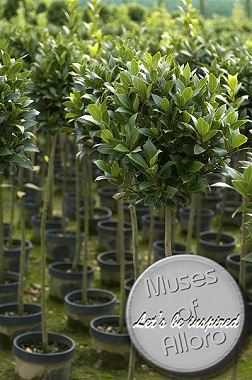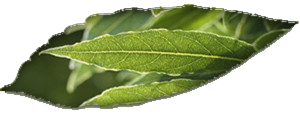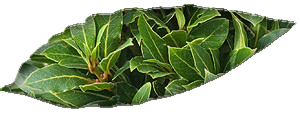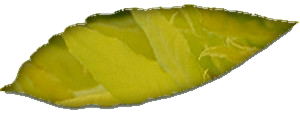Flemisch laurel
Only bay leaves from this traditional growing area bear this label and can be recognized by the PGI logo. This laurel is of excellent quality, obtained through years of specialized cultivation and pruning.
In Flanders, the laurel has had a generation-long tradition since the 16th century in which not only the technical know-how, but also the excellent genetic material is passed on. More than 100 years later, the laurel is still a luxury product that has been recognized as a European “Protected Geographical Indication” since 2015. After the Ghent azalea in 2010, the Flemish laurel is the second non-edible product from Flanders to receive European recognition.
The Flemish laurel in the leading role, from palace to World Cup | The famous Flemish laurel finds buyers at home and abroad.
A tradition of at least five centuries old
The oldest reports on Flemish laurel cultivation date from the 16th century. After all, the “Cruydeboeck” by Rembert Dodoens already mentioned the striking strong laurel in 1554. Also in the “Kruydtboeck” by De Lobel Mathiass from 1581, the laurel from the region around Bruges was known for its cold tolerance and the cutting method was discussed in detail. In the 19th century, Laurus nobilis became particularly popular with the general public and the first family-owned laurel companies emerged. From the 1950s, exports abroad increased.
The secret of the Flemish laurel
The Flemish laurel is a perfectly pruned laurel tree with a sound trunk and beautiful green leaves that is at least 5 years old and grows in a pot. By using the cutting-by-cutting method, identical laurel plants can be created time and time again. The most common pruning shapes are pyramids, spheres and columns.
Muse Thalia, Laurus n. ‘Angustifolia’
Willow Bay,
the laurel of joy and new life
With its narrow willow leaves and fresh light green color, this laurel has that little bit more, a refreshing appearance between the tub and patio plants.
It is an unusual appearance that retains its leaves and elegance in winter and summer and thus deserves its place among all other plants.
The ‘Angustifolia’ is a very filled plant. Just like its big brother, the leaves are also perfect for use in the kitchen and in flower arrangements.
Laurus Nob. ‘Angustifolia’ is a very strong plant that thrives in both sun and shade.
Muse Polyhymnia, L. n. ‘Bay Junior’
Topiary Bay,
the laurel of peace and love.
‘Bay Junior’ grows more slowly with a smaller leaf, very filled and compact. An ideal species for finer Topiary, shape pruning. A refined laurel with the same qualities and properties as the Laurus nobilis.
Contemporary, timeless topiary is still an important part of everyone’s garden. From Topiary to Bonsai, the ‘Bay Junior’ can be guided in many forms.
But even in free growth, this selection will not disappoint. It is a compact grower and if a branch grows wrong, feel free to cut it away.
Muse Urania, Laurus n. ‘Aurea’
Golden Bay,
laurel of eternity and vitality.
‘Aurea’, the Golden Bay, not all that glitters is gold.
The yellow-leaved laurel in full sun and summer will also charm you.
If it turns green again in the winter or in the shade, it will show its color again in the summer and in the sunlight…
This cultivar has a slightly more erratic growth than the normal Laurus nobilis,
but this also gives the ‘Aurea’ some extra charm.
The golden laurel is at its best on a sunny day with clear blue skies…
“Neither witch nor devil, thunder nor lightning shall harm a man where there is a laurel tree.” (Culpepper).
Maintenance
Use: Ideal as a patio plant, on the balcony, in the garden or in front of the door.
Annual care from April to October (growth period).
Position: Outdoors, in the sun or partial shade.
When there is night frost in the spring, place it indoors in the evening.
Watering: Regularly, keep the root ball sufficiently moist.
Fertilization: Fertilize regularly.
Pruning: Cut back long shoots at the end of June, just above the leaf axil.
Annual care from November to March (resting period).
Location: Cool frost-free place (can be quite dark).
Watering: Sporadic, do not let the root ball dry out.
Fertilization: Do not fertilize.
Pruning: Carry out tight shaping with hand pruning shears.
Repotting: Every 2 to 4 years in March, August or September.
Ordinary potting soil is sufficient.






